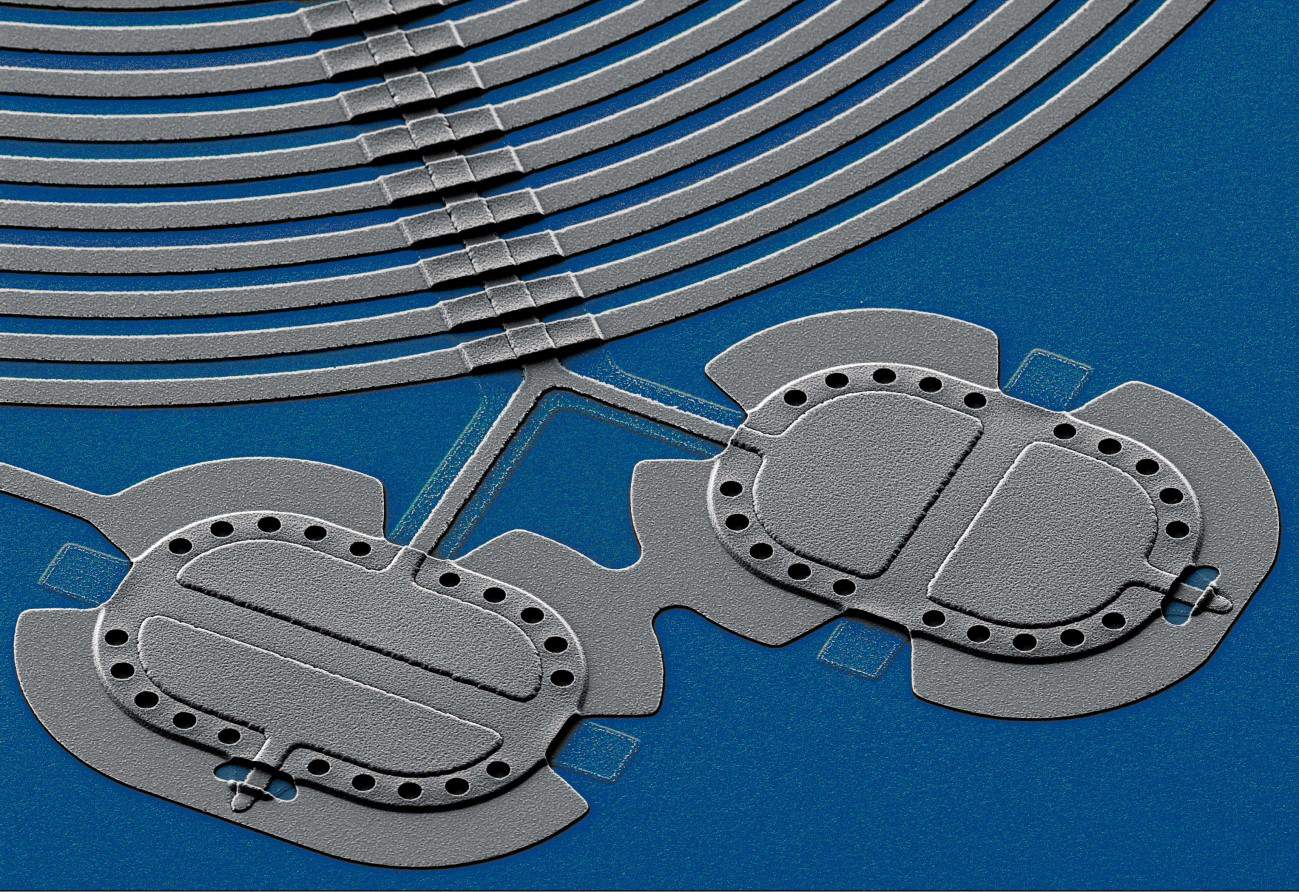A key resource in future quantum communication networks is entanglement: a quantum correlation that can be developed between, for example, distant nodes of the network. Special methods of measuring the nodes’ state can create the entanglement or protect an already existing entanglement against destructive environmental effects. Scientists led by Gerhard Rempe at the Max Planck Institute for Quantum Optics (MPQ) in Germany have implemented such a measurement on two distant atomic qubits. The final state of the qubits has 67 percent “fidelity” to an ideally entangled state.
Two entangled qubits in a Bell state
Two classical bits can exist in one of four states: 00, 01, 10 or 11. Two quantum bits, or qubits, can be prepared in one of these states too, but their wave-like character means they can also adopt a phase factor and then be combined. Four such combinations are known to be especially interesting: in-phase and out-of-phase combinations of 00 and 11 (labelled φ+ and φ–) and in-phase and out-of-phase combinations of 01 and 10 (labelled ψ+ and ψ–). If the two qubits are prepared in one of these four states, which are known as Bell states, they have maximum entanglement. This means, for example, if one experimenter, Alice, measures the state of the first qubit to see if it shows 0 or 1, and her colleague Bob measures the second qubit, Bob always knows the result of Alice’s measurement (based on the random outcome of his own measurement) without asking her.
Alternatively, instead of measuring the qubits separately, they can be measured together. For example, Alice might randomly choose one of the Bell states, prepare the two qubits in this chosen state, and then ask Bob to discover her choice just by measuring the qubits. If Bob measures them separately, he will not be able to say anything about Alice’s choice. Instead, he must measure them together, ideally with a Bell-state measurement, before he can answer Alice’s question.
A proper Bell-state measurement can distinguish between all four states and is termed “complete”. If the measurement not only determines Alice’s choice, but also preserves the entanglement between the two qubits, then it is termed “nondestructive”. Although Bell-state measurement is critical to many quantum processing tasks, it does not always need to be nondestructive (or even complete). Nonetheless, a measurement that has these characteristics will be a very useful tool for generating entanglement. Such measurements can also be used to save an already existing entanglement from environmental noises if implemented very efficiently and repeated quickly enough – a phenomenon known as the quantum Zeno effect.
A proper Bell-state measurement on distant atomic qubits
In their new study, which is published in Nature Photonics, Stephan Welte and his MPQ colleagues describe how they implement a complete non-destructive Bell-state measurement on two distant qubits. They encode each qubit in a rubidium atom trapped in a high-quality optical resonator. Then they prepare two very weak optical pulses with a specific polarization. Each pulse interacts with both qubits successively and after the interactions, its polarization is detected. The first pulse determines if the result of the Bell-state measurement on the two qubits is a φ-type Bell state or a ψ-type one and the second pulse determines if it is plus-type or minus-type.
Staring from the first qubit in this setup, each optical pulse travels through a 60-m optical fibre to reach the second qubit. While a similar measurement protocol had previously been implemented on qubits located very close to each other within IBM’s five-qubit chip, implementation on distant qubits is important for quantum networks where qubit memories sit on distant nodes of the network. “Conceptually, the work done on the IBM chip is similar to ours,” Emanuele Distante, a co-author of the MPQ study, explains. “The main difference is that we measure distant qubits connected via fibre in a network.”
Outlook for improvements and developments
In this work, the state of the two qubits after the measurement is not exactly the Bell state that it should be. Instead, it has an average “fidelity” of about 67 percent – fidelity being a standard measure of similarity between quantum states. This value is not ideal. Nevertheless, it is above a threshold guaranteeing that, although the two qubits do not have maximum entanglement, they are still entangled. Furthermore, simulation of the system’s imperfections suggests the fidelity could be boosted to about 90 percent.

Vibrating drumheads are entangled quantum mechanically
Another practical issue is that the optical pulses are sometimes not detected at the end of the experiment – an event that heralds the total failure of the system to accomplish the task. This makes the measurement system inefficient, but the researchers say that the low efficiency could be improved by reducing the optical losses and other technical advancements.
Alongside these improvements, the group say that measuring and entangling three or more qubits would be “a fascinating avenue” for future research. “Our measurement could be scaled up to a larger number of qubits,” Distante says. “Many nodes can in principle be connected and photons can fly by into optical fibre interacting with the atoms at the nodes. In this way, it could be possible in future to measure the entangled state of more connected qubits.”
